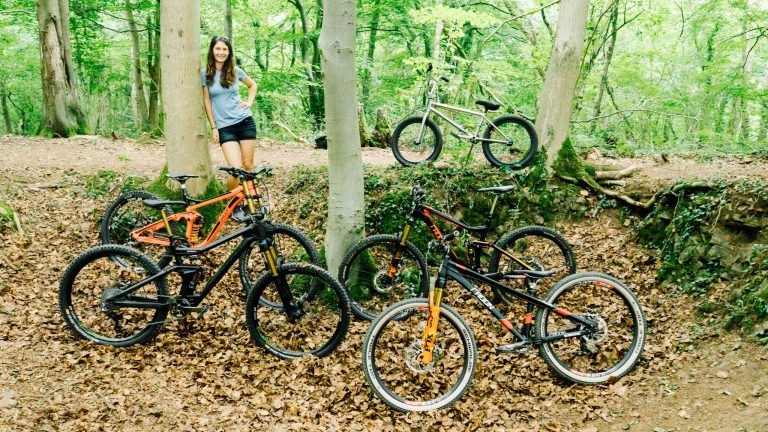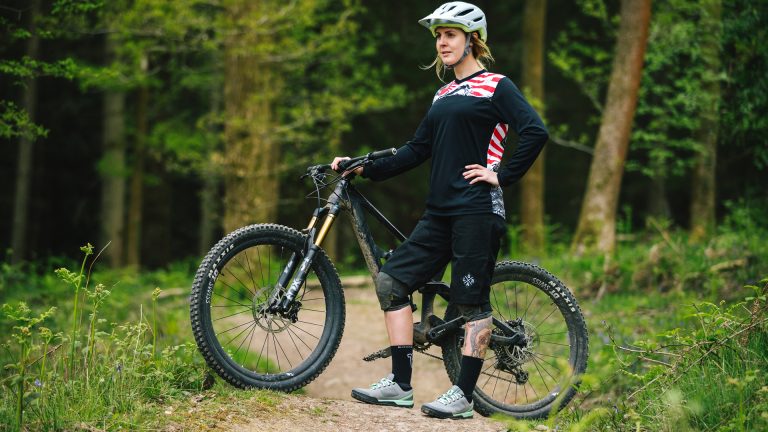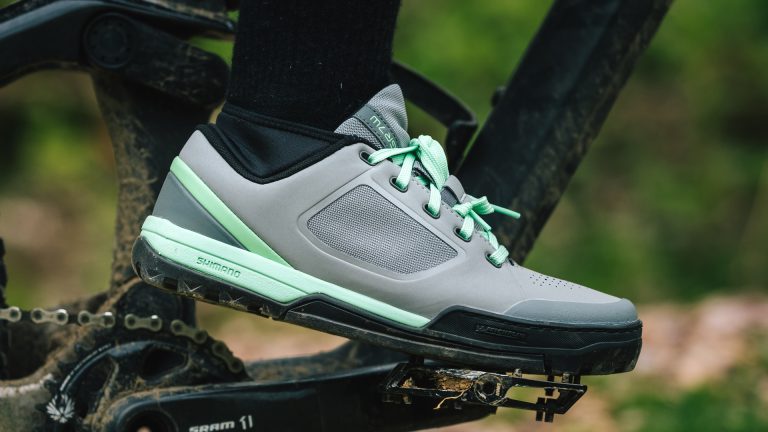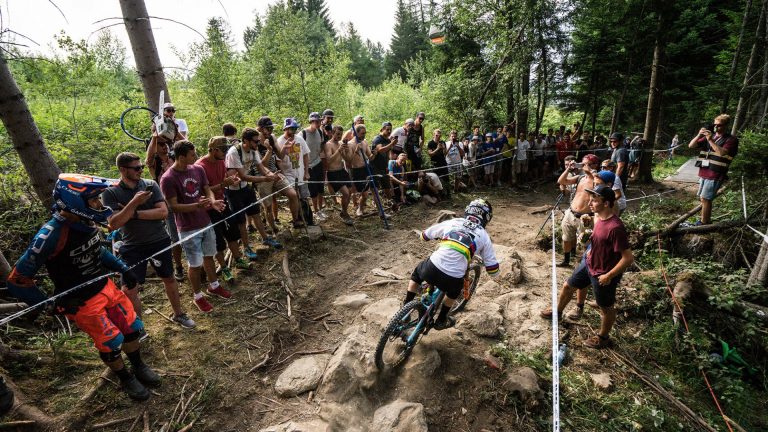Cycling is all about contact points, whether that’s between the bike and the road, or the rider and the bike. Get those right, and you’re on track for a more comfortable and enjoyable ride. Pedals are one of the three main contact points for a rider, the others being the saddle and the handlebars.
One of the biggest differences you can make to how your bike feels and handles is changing the pedals, and the shoes you use with them. Upgrading from the basic pedals the bike came with can make you feel more confident and secure on your bike, which should hopefully make riding it a whole lot more fun.
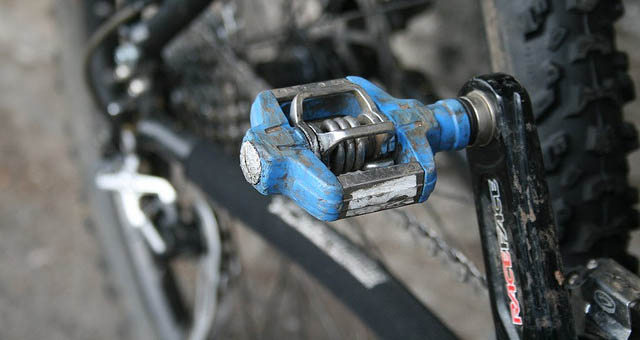
This can be a bit of an investment as these bits and pieces aren’t cheap (think upwards of £30 for pedals, and £45 for shoes) but can make a massive difference to your riding.
There is also a LOT of strongly held opinion in the flats vs clips debate for mountain biking, which you may already have encountered. We try to cut through some of that to bring you the facts.
Pedals and mountain biking
Unlike road cyclists, mountain bikers move around on their bikes – a lot. Although power transference from leg to pedal is important – particularly with cross-country riding – there is a lot more going on.
A typical ride will take you uphill, downhill, over obstacles, rocks, and drops. This means you will be standing up, sitting down, getting on and off and moving position in response to the terrain.
MTB pedal systems need to make sure they allow for this range of movement, without compromising the security of the contact point – eg making sure your feet don’t slip off.
The two systems – clipless and flats
There are two broad systems when it comes to the pedal contact point, with a huge variety of brands and products available under each type. With clipless or clip systems, your feet are attached to the pedals. With flat systems, they’re not.
1. Clipless or clip system
A metal plate or cleat fastens onto the base of your shoe with two bolts, and this then clips onto a mechanism on the pedal. You need to get shoes that are compatible with the cleats.
Some of the features include;
- Smaller, more open pedals – the idea being that mud is less likely to clog up the clipping mechanism
- More float – this is the amount you can move your ankle from side to side without unclipping. Good because you need to have some movement when you are standing over the bike.
- Double sided pedals – you don’t have to think about rotating the pedal to the ‘right’ side. Just pop your foot in, feel for the click and go
- Recessed cleat – most compatible MTB shoes will have a recessed area where the cleat attaches, so it’s not sticking out and in the way when you walk.
NOTE: the term clipless comes from the early days when pedals came with a plastic or metal cage that you slotted your foot into. The newer design with the cleat was termed ‘clipless’ as you didn’t use this cage or ‘clip’ to keep your foot on the pedal. Confusing, I know.
2. Flats
Flat pedals and shoes means you are free to take your feet off the pedals, put them down, move them around or wave them in the air if you fancy.
Some of the main features include;
- Large platform – this means there is a greater surface area for the shoe to grip onto, and the foot to push down on.
- Metal pins – projecting a few millimetres from the pedal, these help grip the sole of the shoe.
- Flat pedal shoes – these have soles made of particularly grippy rubber, or with a grippy tread pattern, and stick to the pedals.
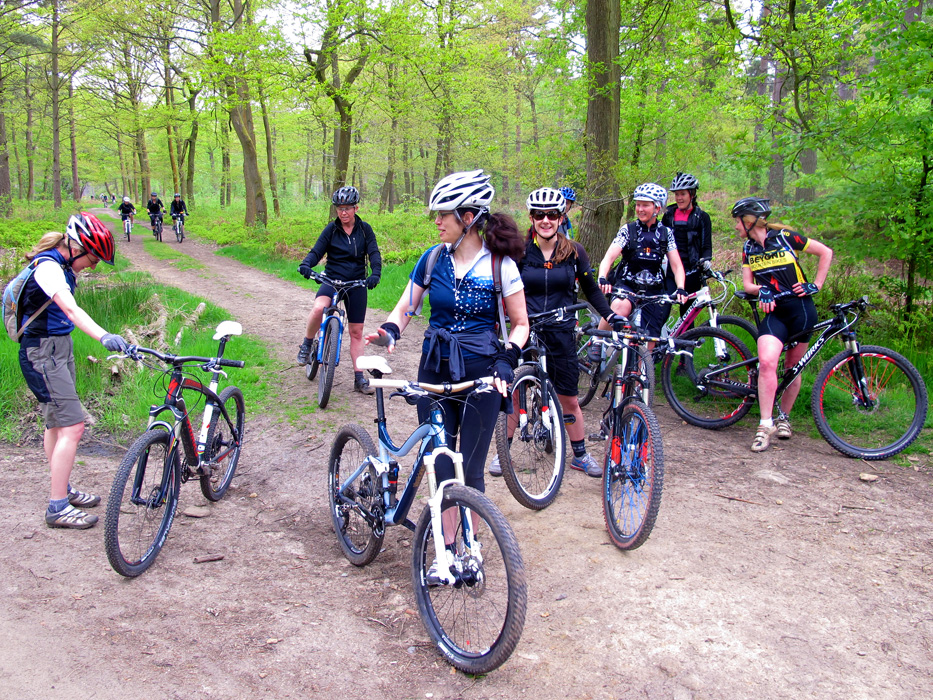
Headline image copyright Steve I via Flickr.



